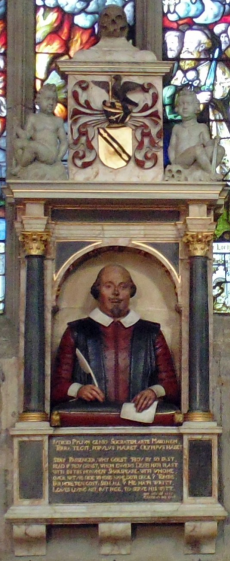
Let me not to the marriage of true minds
Admit impediments. Love is not love
Which alters when it alteration finds,
Or bends with the remover to remove.
O no! it is an ever-fixed mark
That looks on tempests and is never shaken;
It is the star to every wand'ring bark,
Whose worth's unknown, although his height be taken.
Love's not Time's fool, though rosy lips and cheeks
Within his bending sickle's compass come;
Love alters not with his brief hours and weeks,
But bears it out even to the edge of doom.
If this be error and upon me prov'd,
I never writ, nor no man ever lov'd.
William Shakespeare (1564-1616) was a playwright, poet and actor from Stratford-upon-Avon, England and is commonly considered to be one of the greatest writers in the English language. He is best known for his plays, such as Romeo and Juliet, Macbeth, Hamlet and Much Ado About Nothing. However, he also wrote some great poets in his lifetime and “Sonnet 16” is no exception.
Like most of the other 154 sonnets he wrote, the poem takes love as its key subject, specifically tackling the question of what love is – and what it is not. He starts off by writing “Let me not to the marriage of true minds/ Admit impediments.” Here, Shakespeare begins by describing love as the joining of one mind with another, perhaps suggesting interestingly that love is more about the intellect than about the heart, and also implies that love does not accept obstacles. Existing as it does between two people, nothing gets in its way.
He goes on to say that love does not something which “alters when it alteration finds” – in other words, when a person in love realises that the person they love has changed, they will continue to love them; otherwise it was not love they felt in the first place. Rather, love “is an ever fixed-mark”, something which does not break under pressure, even in the most tempestuous of situations. Then on line seven Shakespeare writes that “It is the star to every wand’ring bark”, inferring again that it is something which is fixed, but also that it is something which is transcendent and guides us through life.
His next line, “Whose worth’s unknown, although his height be taken” might seem confusing initially, however what Shakespeare is perhaps trying to get across is that whilst we cannot fully grasp the full value of what love brings to our lives there are few who do not appreciate its signal importance. Then in the last quatrain (verse of four lines) before the couplet on which the sonnet ends, Shakespeare says that “Love is not Time’s fool”, in other words, it does not alter as time passes, attempting to define what love is by stating what love is not as he does in lines two to four.
And, finally, in the closing couplet he suggests how sure he is of his definition of this most important of bonds by declaring that if he is wrong it makes all he has written defunct and no person has ever truly been in love.

0 Comment:
Be the first one to comment on this article.